Leviathan
An Introduction to the Managerial Blob, the Controlling Interest of Our Civilization and the Animating Force Behind the Modern Democratic Party
This is a long exploration of the bureaucratic super complex-’the Blob’-which long ago acquired a life of its own and gobbled up companies, institutions, sectors, and political parties. Now it seeks to digest the entire country.
The Destruction of Leviathan (1866) by Gustave Doré, engraved by H. Pisan
It’s in the nature of social movements and large organizations to transmute individual beliefs and desires and efforts, into coordinated action, in order to conform to social incentives. Those actions (“the program”) will serve the incentives of the organization and the movement, and it will offer individual benefits to the members, but the program isn’t necessarily working towards the conscious goals and beliefs of the members. In fact, it almost never is.
American troops in Afghanistan weren’t really fighting for U. S. foreign policy goals or ‘democracy.’ They fought because they were soldiers (a profession they chose due to impulsiveness or aggression or modern aimlessness or patriotism-but never to advance the institutional goals of the military of the U. S. government), and because they didn’t want to let their team down. They wanted to win in the same way that men always want to win in a contest. They wanted to survive and to protect their friends, not “rebuild” the country. The military transmuted those desires and tendencies into predictable and productive activity, using training and specialization and hierarchy. Medieval priests had no interest in the institutional interests of the Church. The Catholic church harnessed a desire for male status and female safety and the opportunity to make a living reading, speaking, and writing (rare endeavors for sustaining a person in the Middle Ages) to make priests and nuns, and then the clergy conformed to the institution’s interests through use of incentives and a hierarchy.
The medieval church became the biggest landowner in Europe, possessing more than a third of all owned land in certain European countries at times. It patronized the arts and played politics and organized wars. None of this had anything to do with Christianity, or with the personal goals or values of the people who composed it. The bureaucracy operated according to its own incentives, which were very distinct from service to the laity or proselytizing or ministering to the needy. As I said, every large, hierarchical organization acquires this kind of inertia and expansionary nature (unless restrained by some external or internal force or rule, and there is no such force or rule for American bureaucracy). That’s because responsibility and decision-making become diffuse. The one central goal of all members and levels of the organization is for it to thrive and grow (since growth for the organization represents more resources and opportunities for certain individuals). So grow it does, until something interferes or the organization dies due to being starved of resources.
We now have a situation in this country in which 4 salient facts are totally undeniable:
Many areas of our lives are bureaucratized, and the economy has become far more administratively byzantine
The bureaucracies defend their own interests, and support the systems of power and credentialing of the professional managerial class (PMC)
The bureaucracies are growing
In every area in which the bureaucracy is growing, things are getting worse
This is the bureaucratic model: a picture of our society that integrates certain realities about bureaucratic inertia and the centralizations and inefficiencies in contemporary American life. The increasing distance and class arrogance of managerial elites (who now openly believe that it is their right to coordinate and run our society, even if the voters feel and the president says otherwise) is evident. The use of status and hierarchy and personal incentives to corral behavior and coordinate the thoughts and actions of that managerial class, who are its beneficiaries and advocates is the outstanding feature of our civilization. We’re a nation of people who believe that we’re free as we nervously avoid topics at work, and devote 40% of our energies to some faceless social structure which cares nothing for us, and sink farther into addiction and paralysis. We are not free. We are managed - more so every day.
The reality that PMC members have an elevated (relative to decades ago) sense of social prerogative and a contempt for non-PMC people and a desire to protect their sinecures and programs and nonprofits and privileges-a desire to protect the Blob-is apparent everywhere around us. These people will claim that they really desire services for the homeless or climate justice or equity-informed education, but that’s because they’ve been taught to see their role in these contexts, just as a medieval priest would characterize his role as serving Christ, even while he executed the imperatives of the Catholic Church. What PMC members and priests really care about, in general, above climate or Christianity or social benefit, is their jobs and their status. If you pay attention to the strange conflicts around USAID and the Department of Education (DOE) cuts this becomes obvious. Gestures are made towards foreign aid and poor middle schoolers but those aren’t the things that animate these people, because they’ve never met a poor middle schooler or a Colombian activist. They’re fighting for the Blob, and their place in it.
Please forget DOGE and federal judges and X posts and celebrities for a minute. Consider the landscape: academia, medicine, mental healthcare, environmental policy, K-12 education, immigration, entertainment, the pharmaceutical industry-these are the fastest growing parts of the American economy. They have been for decades. In each area the bureaucracy has grown much faster than the sector itself and it’s gotten more labyrinthine and expensive… and ineffective.
There are endless examples of this trend, for it is the most expansive and important change in our civilization. It is completely unaddressed by the bureaucrats themselves. You will never hear them answer these objections or defend the performance of California homeless nonprofits or Baltimore school administrators. Performance is beside the point. Existence is the point, and growth. These organizations and their members would rather see students’ scores continue to fall than to lose administrator (consultant, researcher, whatever the area in question) jobs. No one will ever state this plainly, but it is true all the same, and it’s obvious when you examine their actions and their priorities.
Washington University in St. Louis reports 17,019 FTE students and 17,128 FTE noninstructional staff—meaning there are more nonteaching staff than students!
At most universities, the ratio is more like 15 nonteaching staff for 100 students. But teaching faculty amount to less than half of that.
These ratios do not pencil out. The average student cannot afford to pay tuition to support 1/6th of the salary of an administrator, plus pay for a share of faculty salaries and other costs. Government support, including student loans, fills the gap. And the government does not care so much about what it pays for.
Having more nonteaching staff than students makes absolutely no sense if your primary mission is education… but it’s not. It’s bureaucratic growth. This is the situation (or close to it) at dozens of American colleges.
…the elites themselves are the problem.
Decades of unchecked power, insulated from competition and scrutiny, have bred corruption, incompetence, and self-interest.
The COVID-19 pandemic crystallized this perception. Lockdowns, enforced with little regard for economic fallout or public consent, exposed bureaucratic overreach and a disconnect between elite mandates and lived realities.
The pandemic response became a focal point for contra-elite mobilization due to the hypocrisy of:
(1) Asymmetric Enforcement
California filled their skateparks with sand to “stop the spread”, but allowed massive BLM marches (April 2020)
AOC's maskless Miami brunch, after calling for 'draconian' rules in NYC, then fleeing to the freedom of Florida (January 2022)
(2) Scientific Establishment Overreach
The CDC's initial dismissal of natural immunity (May 2021) followed by eventual recognition (August 2022) destroyed credibility in non-political experts. Vaccine efficacy claims requiring continuous adjustment ("90% effective" to "prevents severe outcomes") fueled perceptions of elite incompetence.
Dr. Jay Bhattacharya, a Stanford medical professor, faced suppression and censorship on Twitter starting in 2021 when he joined the platform and began sharing views critical of mainstream COVID-19 policies, such as labeling mass testing a "lockdown by stealth."
Internal Twitter documents, later revealed after Elon Musk’s 2022 takeover and detailed in a March 14, 2023, Wall Street Journal article, showed that his account was tagged with a "Trends Blacklist" label, a form of shadow-banning that hid his tweets from trending topics and reduced their visibility.
…
(3) Financialization of Public Health
Pfizer's $36.8B in 2021 COVID vaccine revenue juxtaposed with FDA's accelerated approval timeline created perceptions of regulatory capture.
Moderna's 4,300% stock price increase (2019-2021) while maintaining government patent protections exemplified elite self-dealing.
The Biden administration, with its aggressive regulatory pushes and perceived coziness with corporate and cultural elites, has only deepened this rift:
Operation Choke Point 2.0: Treasury Department guidance restricting crypto exchanges' banking access
SEC's "Enforcement Sweep" against private companies using Rule 506(c) exemptions
DOJ antitrust action against Medicare Advantage disruptors like Clover Health
All of these developments and events can be understood in the context of the Blob using alarm and doubt and ‘crisis’ (partly defined by the bureaucracy, for its own benefit) to amass more power and to try to neuter critics and competitors. Like the migrant crisis or the homelessness explosion or the mental health epidemic or our failing schools, these developments make no sense in the traditional context of policymaking and logic. These are bureaucratic expansions-and the issues raised and pretexts given are just that: pretexts.
The Democratic Party is full of people who aren’t half as sympathetic as they think—starting with Kamala Harris, who confused her own vacuous charisma for actual popularity. They assume we owe them tears when their grants or cushy jobs get cut. But why? This is the same party that spent the Obama era lecturing us about all the things government can’t do—healthcare, jobs, you name it—while building an administrative state that sidelined Congress. Now Elon Musk is calling their bluff: “Fine, let’s just cut government.” Suddenly, all those professors and DC lifers—the ones who spent years sneering at laid-off factory workers (“Learn to code!”)—are sweating because their sinecures might vanish.
Tough luck. These are the same people who dismissed the idea of a federal job guarantee but never bothered to explain why their gender studies department or consultant cousin’s grant deserved taxpayer money. You end up sounding like those CEOs who demanded bonuses after crashing the economy in 2008. Make the damn case or get out. America’s not your trust fund.
And spare me the meltdown over Musk “destroying democracy.” Democrats paved the way for this. Nancy Pelosi and Dianne Feinstein—brain-dead dynasts clinging to power like Saddam Hussein in a pantsuit—are no more legitimate than Musk. Hell, it’s easier to overthrow Gaddafi than to primary Randy Weingarten at the AFT. Pelosi’s been dodging debates and challengers for decades, and Feinstein literally died in office because the party couldn’t be bothered to nudge her out. You want me to fight for this “democracy”? A system where Pelosi poses in kente cloth for photo-ops while treating Congress like her family’s LLC? Give me a break.
This party’s been alienating its base forever. Remember when they kneecapped Bernie? Told the “unwashed masses” to sit down and let the elites handle things? Congrats—now Musk and Trump are the elites, and they’re handling things their way. You are now the unwashed masses. Poor folks already know the drill: America keeps chugging along no matter how many of them die in the streets. So when DC bureaucrats lose their jobs? Cry me a river. The country won’t collapse. Twitter didn’t collapse when Musk fired 80% of its staff and replaced them with Doge meme enthusiasts. My tweets still go out. The app’s still here, just like the U.S. will survive your layoffs. Turns out, the world doesn’t revolve around your LinkedIn profile.
Being an American now is like watching your favorite TV show get canceled despite a letter-writing campaign to save it. We’re spectators in our own government—cheering, booing, but never deciding. And Democrats have been running this show most of my adult life. I saw the writing on the wall in the early 2000s in San Francisco. There was an election—Matt Gonzalez vs. Gavin Newsom—and even in that “progressive” utopia, the system was cooked. Newsom won, proving SF wasn’t populist enough to elect a guy who literally was Ralph Nader’s friggin’ running mate. That’s when I realized elections are just Netflix reruns: the same cast, the same plot, no surprises.
Now Musk rolls in like Bain, hiring a bunch of Ivy League kids to audit companies and fire people. We were fine when your niece did the same thing at Deloitte or McKinsey—you bragged about her salary! But when Musk does it to your federal contract? Suddenly it’s oppression. Please. You’ve spent decades casually stepping over ordinary folks while clutching your government jobs. Now the market’s coming for you, and all that “expertise” won’t save you. And the entire culture industry failed because this is America’s culture.
The sudden conflict around bureaucratic downsizing is fascinating, and illustrative of the distance between regular people and the legions of the PMC. It’s also illustrative of the attitudes of entitlement many have. ‘We’re working on worthy things!’ they often seem to say, sidestepping the question of whether their work or their organization is actually doing any good. If THAT was the assertion (‘we’re making a difference!’) we would hear it said, hundreds of times each day. Instead, the focus is on the jobs themselves, and the institutional prerogatives. Once a class gains enough power it becomes arrogant and its members assume that their gains and privileges are earned. For these people it is entirely irrelevant whether or not their agencies have any social value. They never ask why all of their programs and procedures and priorities never seem to improve things. They’ve never bothered to investigate such matters, because they’re simply not important.
Freddie deBoer, Feb. 28th, 2025:
The claim I want to advance today is pretty simple: the more that accommodations are specific, limited, and (most importantly) material, the more effective and socially useful they are. And a core problem is that contemporary disability rhetoric is so often general, boundless, and immaterial. It’s a move away from ramps and grab bars and closed captions and towards vibes. It’s not that the only necessary or important accommodations are for physical limitations; as someone who suffered through several years in an office job while on medications that damage focus and short-term memory, I certainly understand the need for accommodations that are more behavioral in nature. The point, though, is that the more immaterial we get, the harder the conceptual questions are and the less and less likely it becomes that accommodations are actually going to do what the ADA is intended to do. For example, I do support giving students with certain learning-related disabilities additional time to take exams. But at least a dozen high school and colleges educators in the past few years have told me that they have had classes where more students receive such accommodations than don’t. Sometimes it’s as many as three out of four. Such a scenario, I would argue, muddies the line between an accommodation for some and a penalty for others.
Part of the trouble is that the ratchet only ever seems to go in one direction - because disability accommodation lies at the intersection of legal liability and progressive norms, the pressure is always to give way to greater and greater accommodation. Which is how you get situations like that of an elite small liberal arts college where I have some connections, a college of less than 3000 undergraduates that, despite its size, as of a few years ago not only had authorized dozens of emotional support dogs and cats but also several emotional support rats and an emotional support snake. For the record, emotional support animals are not legally recognized service animals, but when people demand their recognition, the arguments they make are right out of disability rights activism and coated in a patina of legalese. And even in these vibe-shifted United States, many institutions perceive the risks of lawsuit and bad optics to be sufficient that they’ll roll over. And this, in part, is a consequence of the vibes accommodation.
This trend-toward expanding the definition of problems and basing them more and more on feelings and abstractions-is everywhere. There are probably other causes for its existence in the debate around disability and the ADA but this change certainly aids the growth of bureaucracy. Accommodations (defining, evaluating, implementing, protecting), litigation, emotional support tools, therapy-all of these offer fertile ground for Blob expansion. Will they improve student performance or yield a happier society? Of course not! It’s rare to even find experts who ask such questions. The real question is whether they will address the problems as defined, which means lots of resources and attention and discussion and no solution. This is the trend.
for decades the marxist/aggrievement-cultists, funded by an endless firehose of federal money and the massive DEI and partisan pressure, have utterly dominated universities.
protected and enabled by this backstop they have created schools and departments that are irredeemably rancid and will perceive anything even close to handed as "far right extremism." they rage and war at anyhting not “just like them” and “university as struggle session cauldron” where the rights of a tiny group of unhinged and unselfgoverning “protest majors” funded by outside agencies are given not only precedence but pride of place over the kids that just wanted to learn engineering…
…
it’s basically impossible to compete unsubsidized with those getting massive subsidy, so everyone has to play.
this is exactly what ike warned us about in his farewell address:
that a small unaccountable group in government would come to dominate the funding of scientific research and thereby impose its own doctrines and dogma upon the pursuit of "the scientific method" rendering it instead "the science™" a pay for play monopoly captured by federal interests who ask what your conclusions will be and check them for ideological purity before they agree to fund the work.
Bureaucracy is expensive. Without some direct and strictly enforced brake it tends to grow apace-mental healthcare, nonprofits, medicine, academia, K-12 education, research production…
Michael Shellenberger, Jan. 21st, 2024
[Regarding homelessness]…conservatives are right that we also mandate psychiatric care less than many other developed nations.
Barnard’s insight is that if you improve mental health care, fewer people require hospitalization, which is the most expensive part of the system.
If you improve mental healthcare and enforce basic rules the problem will get better. Bureaucracies don’t want the problem to get better, even if many of their members do.
, May 2024
When someone hears the word nonprofit, they assume that such an organization is working for the public good; that it serves the homeless, protects the weak, exists for the benefit and the betterment of society at large. Hearing that something is a “nonprofit” immediately gives a sense that the organization is trustworthy and the people running it are driven by a charitable agenda. It’s a word that shuts down the critical faculties and grants an instantaneous moral stature to any organization to which it is applied. Consequently, nonprofits receive a benefit of the doubt that would not be granted to any other form of private corporation.
…In some cities, upwards of a billion dollars of public funds are paid to nonprofit organizations every year with glaringly insufficient safeguards to ensure that the money is used in a manner likely to serve the public interest.
This money is then spent in ways that would shock the taxpayers whose hard-earned dollars are being effectively stolen from them. Nonprofits that self-righteously declare themselves providers of homeless services actively lobby to make homelessness worse in order to increase their own funding; nonprofit organizations hire convicted felons—including murderers, gang leaders, sex offenders, and rapists—who go on to commit more felonies while receiving hundreds of thousands of dollars in government contracts; and the executives of nonprofits, the very people in charge of institutions whose stated purpose is not to make money, earn millions of dollars while catastrophically failing to deliver the public services we are paying them to provide.
Once you start digging into the evidence, you find that the places where “progressives” wield the most power are some of the least socialist governments in the country. In 2022, San Francisco spent $5.8 billion on private contracts, over 40 percent of all city government spending, while the entire budget of Houston, a city 2.5 times as large, was only $5.7 billion. It is a strange form of socialism that runs more than two-fifths of its government through private contractors, instead of using publicly owned developers and social housing.
Portland, Oregon, meanwhile, has been suffering from a serious trash crisis for the past several years, due both to the city’s soaring homeless population and the government’s refusal to enforce antidumping laws. Portland’s response to the festering trash piles now blighting a once-beautiful city has not been to dramatically increase the government’s capacity to pick up and process garbage; instead, Portland, in conjunction with the state of Oregon, has paid millions of dollars to nonprofits to deal with the trash problem.
As Portland outsourced trash collection to private nonprofit organizations, the ability of the government to collect trash has been gutted by budget cuts and a lack of resources. According to local activist Frank Moscow, Portland used to sweep every street as a matter of course, but currently only has one functioning street sweeper in the entire city. Not that it matters much, since Portland’s Bureau of Transportation suspended all street sweeping activities last June after another series of budget cuts.
Adding to Portland’s trash-addled misery is the city’s inability to stop anyone from dumping their trash where it is not legally allowed to do so. In 2016, the city issued thirty-one citations for illegal dumping; in 2021, they issued a grand total of one citation, for a measly $154. An opinion column published in the Oregonian in 2022 asserted confidently that “you could dump 10 large bags of garbage in Pioneer Square tonight and drive off without fear of being caught or penalized,” before going on to complain that Portland picks up trash from residential units every two weeks, instead of offering weekly trash pickup like almost every other city of comparable size.
This is the state of affairs in almost every city where “progressives” have a large impact on local politics. Progressives claim to support government spending programs, but also have an anarchistic, anti-governmental attitude that can be seen in their support for policies like police abolition in 2020. Although progressives want the government to fund public programs, their opposition to centralized state power means they often don’t want the government to run the programs being funded.
The scandal of the past 2 months, which the media doesn’t want to accurately recount or consider, is the maze of transfers, contracts, and grants which are being uncovered and interrogated. Many of them directly assist relatives of politicians and the politicians themselves and their political parties.
This impetus drove the migrant crisis, although it was rarely noted. Hundreds of billions of dollars flowed to organizations to help feed and house and help migrants. To act as if these incentives wouldn’t affect behavior is asinine, and to pretend that the controversy was all about the migrants is equally so. There were massive financial incentives to keep illegal immigrants flowing into our country, and those incentives directed many of the groups and figures that were closest to the Biden administration. All of this is undeniable.
, May 28th, 2024
So how does the Biden Administration’s new NIH office seek to protect “scientific integrity”?
By imposing more and more DEI priorities upon the executive branch agency, according to the document.
“Diversity, equity, inclusion, and accessibility (DEIA) are integral components of the entire scientific process,” the doc reads, adding, “attention to DEIA can improve the success of the scientific workforce, foster innovation in the conduct and use of science, and provide for more equitable participation in science by diverse communities.”
The NIH is an essential component of the government bureaucracy because it acts in part as a massive slush fund grant maker to political and policy allies in the “health” space. Over the years, the NIH has continually weaponized the broad category of “medical research” to award conformity over innovation ingenuity. It hands out $40 billion a year in grants to its public and private partners in the United States.
Instead of trying to produce better research or technology (which is difficult to accomplish in a frozen, byzantine structure like the modern bureaucracy) organizations establish new goals-which can’t really be quantified-and then devote enormous resources to those instead.
Faculty in U.S. universities overwhelmingly hold views on the political left. That probably won’t be news to most THB readers. Today’s post documents just how extreme today’s left-leaning ideological uniformity has become among professors and shows that in the past, across disciplines faculty were much more politically diverse.
The lack of diversity among professors is problematic for both education and research, ostensibly the overriding purposes of universities. A more insidious and fundamental issue is that some extremely partisan faculty (and administrators) have commandeered university departments, centers, institutes — even entire campuses —and repurposed them for political advocacy.
Diversity of opinion within the framework of loyalty to our free society is not only basic to a university but to the entire nation. —James Bryant Conant 1948
Plummeting confidence in higher education among Americans (see figure below) reflects a widespread belief that universities have become institutionally politicized in ways that are contrary to the values and politics of most citizens. As you’ll read below, such beliefs are backed by evidence. Universities are supposed to serve common interests, not the narrow political agendas of the faculty.
…
You will find that the members of the bureaucracy tend to adopt the worldviews which best situate themselves and their organizations to continue to gain financial resources and social power, and which protect their own credentials and privileges. That worldview is now the progressive left. It is indistinguishable from bureaucratic prerogatives, in every detail and on every issue. It is literally the animating force behind the entire Democratic party at this point.
Some practitioners of science communication have not limited themselves to advocacy for policies, politicians, or a cause — and have gone further to try to limit the expression of others in the academic community whose views they disagree with or do not think to be helpful for advancing their causes.
In 2017, journalist Keith Kloor labeled these activists the “science police” and explained:
[H]ighly charged issues, such as climate change, engender the most active policing in the scientific community and that the intensity of this policing is proportional to the perceived influence of the person on the receiving end of it. I’ve also observed another common strand: those in the scientific community who become preoccupied with the public interpretation or political implications of scientific findings tend to deputize themselves as sheriffs of scientific literature and public debate.
Such policing has become institutionalized in the creation of a new field of study, called misinformation research, in which certain professors appoint themselves as arbiters of truth in scientific and public debates. Like most academics, the self-described political views of misinformation researchers are skewed far to the political left.
Together, large parts of science communication and misinformation research comprise the yin and yang of today’s pathologically politicized academic enterprise. The former is about promoting the right messages, and the latter is about preventing others from promoting the wrong messages.
These two new areas, plus a dozen more, represent new opportunities for growth of the bureaucracy, and new opportunities to gain wealth and status for their advocates. While no utility can be demonstrated around these endeavors that is irrelevant: create an abstract ‘problem’, define it as broadly as possible, and then throw people and money and studies and programs at it. Forever.
:Almost 60 years later, American universities have dramatically expanded their multiverse even further to include hospitals, entertainment, professional and amateur sports teams, real estate ventures, hotels, recreation centers and other amenities, an active social environment for young people, and more — alongside the university’s traditional roles in research and teaching.
Regarding the intersection of mental healthcare and crime, Freddie deBoer wrote, on Jul. 3rd, 2024:
“We need more resources and programs and funding. Then there’ll be no more problems.” Do we need more resources, programs, and funding? Yes. Can those things, themselves, fix our problems? No, no, no. They can’t. When the problem is people who refuse treatment when given access, as was the case with Jordan Neely, saying that we need more voluntary resources is nonresponsive. It’s simply not an answer! More voluntary resources do not do a single damn thing for people who will never accept voluntary treatment. If you dig into the historical record, you find all manner of examples of severely mentally ill people who refused care and who ended up dead, in prison, or living a wretched existence on the streets. What do we do about them? The relentless repetition of demanding more funding and more voluntary care provides more answers. What happens when you present voluntary care to someone who will turn it down and immediately regress into a life of pain, danger, and depravation? How many times are you allowed to ask them if they want help? And what do you do if they say no again and again and again, and you have to watch them suffer? What happens when you’re watching them die? Do you ever think to change your approach? These people have no answers for any of this. They just have cliches and emotional bullying.
Here’s a good example from a piece in The Guardian by Ruth Sangree.
Some alternatives do have the potential to generate positive outcomes without further traumatization. Working on guaranteeing access to safe and affordable housing, as well as providing access to quality, voluntary mental health care, could play a huge role in improving the quality of people’s lives. But that would require rejecting the mayor’s preferred “law and order” narrative in favor of something more nuanced: a vision of treatment that is more deeply rooted in personal autonomy, compassion and community care.
How does that answer the challenge of Jordan Neely and people like him, at all? Again, Neely not only had access to care, he had a legal obligation to receive that care, and he simply walked away because there was no security in his program. There are many people like him, who are offered accommodations by the system and refuse them because of their illness. What would “a vision of treatment more deeply rooted in personal autonomy, compassion, and community care” have done for Neely, such that he wasn’t rotting to death in the subway system? Nothing. Nothing at all. They have no answers. They have no answers.
They have no answers because they have adopted radical ideas of autonomy and agency (which are inconsistent with human nature and psychology). Those ideas just happen to be perfect for their bureaucratic employers to keep the problem alive and in full view, and to give the impression that it’s intractable, all while consuming enormous amounts of wealth and gaining enormous power and status. You can stay in this world for years and never actually hear a solution for a social problem. Solutions aren’t what’s desired-management and study and problematization and funding are.
At the beginning of 2023, I worked with Florida governor Ron DeSantis to launch the “abolish DEI” campaign. We began by terminating the DEI bureaucracy at New College of Florida, a small public university in Sarasota, where I serve as a trustee. The reaction from the racialist Left was intense. Protesters descended on the campus and the left-wing media published hundreds of articles condemning the move. But we held firm and made the case that public institutions should judge individuals based on their accomplishments, rather than their ancestry.
The argument began to take hold. The polling data indicated that Americans supported a “colorblind society” over a “race-conscious society” by large margins. Even the New York Times, one of the largest boosters of left-wing racialism, started publishing pieces that criticized DEI. At the same time, the Black Lives Matter movement was ensnared in scandals and the leading intellectual voices of DEI, such as Ibram X. Kendi and Robin DiAngelo, faced sustained public scrutiny and seemed to disappear from the spotlight.
We pushed onward. Governor DeSantis led the way, signing legislation abolishing the DEI bureaucracy in all of Florida’s public universities. A dozen other red states followed, restricting DEI programs and banning DEI-style discrimination in their public institutions. The process became a virtuous cycle: each state that passed an anti-DEI bill reduced the risk of the next state doing the same. The campaign moved from the realm of debate to the realm of policy.
Trump’s victory over Kamala Harris on November 5 sealed DEI’s fate. Corporate America, including companies such as Walmart, and Meta, interpreted the event as an incentive to change, voluntarily terminating their DEI programs before Trump took office. Mark Zuckerberg made it explicit, arguing that the country had reached a “cultural tipping point,” which convinced him to stop DEI programs. And Zuckerberg, along with numerous other tech titans, were prominently seated at the inauguration yesterday.
The advocates of DEI (and similar initiatives) claim that they exist for the benefit of marginalized people… yet they directly help the millions of professionals (disproportionately white women with graduate degrees) who implement them, while doing almost nothing for most people in ‘marginalized’ groups.
Just as with the immigration debate, there is a claim, and then there is a deeper and more obvious motivation. It’s never acknowledged or addressed by the bureaucrats. That is how you know it’s valid. If the claim that this was all make-work for elites was specious or ridiculous the PMC would raise the issue and dismantle it. Instead, they pretend it doesn’t exist and simply never speak about it.
Modern homeless nonprofit directors and climate researchers and therapists have their own interests and their own incentives to pursue their chosen fields (personal interest, social status, money) and their own values (addressing climate change, caring for immigrants). These values cannot (as we’ve already established) be the central goals of the organization at large. In fact, when it comes to ‘problem-solving bureaucracies’ (which describes all of them to one degree or another; information-dense organizations are only established in response to needs or challenges) the organization doesn’t want the problem to go away. This is an issue that’s often shrugged off by the left but it’s an urgent claim. Bureaucracies which deal with discrimination or homelessness or mental illness don’t want these problems to go away… OF COURSE they don’t. The best scenario for them is to be situated in an area with a stable, unsolvable problem, with no expectation of resolution and endless opportunities for growth. If you look at the response of the nonprofit sectors to the victory of gay marriage or the voting rights act and the response of the intelligence community to the end of World War 2, and the fall of the USSR, you will see a very clear pattern. If you note the suspicious emergence of Critical Race Theory from deep within the Blob’s womb (academia) less than two decades after the passage of the Civil Rights Act you may begin to see a pattern. These advocates and organizations don’t want problems to disappear. Instead, they redefine the problem (whether or not it is one) and reposition themselves for increased expansion.
It is simply undeniable that the Blob doesn’t want a healthy, autonomous, moral, stable and wealthy society. It doesn’t want families and healthy communities and fit and informed (not educated, but informed and analytical) citizens. It wants a sick, isolated, neurotic, restless, and dependent one. It wants people to depend upon it for information, medicine, schooling, housing, sustenance, and the feeling of security. That is the society that it is slowly building.
Political models can be evaluated according to their ability to account for the social and political realities you see, and according to their usefulness at making predictions. Here’s one negative example: the leftist claim that the Republican base is partly motivated by bigotry fails to account for the fairly equivalent opinions on racial issues between the parties. It doesn’t account for the very marginal expression of racist ideas and caricatures in the conservative media and political space. It doesn’t account for the almost uniform denial of racism among conservative figures (if so many affiliates and supporters were racist, surely there would be major figures, even on the margins, explicitly and openly expressing racism?). Instead we see that racism (in its most malignant forms) is nearly as unpopular among Republicans as it is among Democrats. We’re expected to believe that there are tens of millions of racists who are so closeted that they never consume racist media, never express racist ideas to one another, never ask racist questions during interviews. That’s simply not how belief works, especially political belief. If there’s little evidence of a belief then there’s little of the belief.
Recently that account of Republican supporters failed to predict the popularity of Trump among Hispanic voters. It failed to predict that young, urban, white women with college degrees would be one of the strongest demographic blocs of support for the Democratic candidates. It failed to predict the increasing class correlation in party affiliation. It failed to predict the outcome of the election, and Trump’s policies (are any explicitly racist? has he governed as a racist? Why not?!). The idea that Republicans (as a group) are strongly motivated by racism is therefore not a good model.
The bureaucratic model accounts for the inordinate growth of medical, academic, social services, corporate, legal, and political bureaucracies. It accounts for the decreasing quality of life in each of these social sectors. It accounts for the tendency of the organizations to focus on vague and amorphous goals and priorities (equity, inclusion, accessibility) while ignoring the ostensible central function of their institutions.
For example: running a high school is not conceptually difficult. You need programs, you need facilities, and you need instructors. You might need a few counsellors and administrators. You need to make sure that kids show up and behave and meet a certain minimal level of school conduct. You should reward the best teachers and fire the worst, and make sure that the programs and sports and activities on offer are safe well-managed and worthwhile. That’s it. If one was trying to improve education, they would focus on one of these things. If people were executing the bureaucratic model, they would introduce a lot of extraneous goals and programs. They would ignore the core issues of discipline and studying, and instead focus on vaguer and less measurable issues. They would fight any effort at measuring the quality of their product (instruction) and they would saddle the system with ever-increasing numbers of administrative staff, and time-consuming campaigns, and endless rules and paperwork requirements. That is precisely what we see.
Many problems aren’t particularly complicated. Health issues (in the West) are often caused by poor diet and bad habits. Homelessness is caused by mental illness and drug addiction. Poor academic performance is caused by poor teaching and low student motivation. Poverty (in the United States) is caused by laziness and disorganization and pathological behavior. (Most) crime is caused by greed and antisocial habits, and also drug addiction. To address these problems you first need simple and clear rules and they must be enforced. The bureaucratic Blob doesn’t like simplicity or clarity. It wants complication and administrative levels and specious programs and studies and education campaigns. It wants consultants and managers and executives, not volunteers and teachers and police officers. If the bureaucratic model was accurate we would expect to see each of these problems be defined more fuzzily, their causes complicated and ultimately denied altogether, and we would expect to see organizations trying to suck up maximum resources without accomplishing dramatic reductions. We would expect the see the focus deliberately moved off of student performance and public safety and basic health indicators. We would expect to see a wave of ‘new’ problems (transphobia, gender inequity, misinformation) which would also become hideously complex, but yet still urgent… and expensive. That is precisely what we see.
Anxiety and depression and ADHD offer opportunities to spend money and hire providers and establish new programs-Blob appendages. Who cares if the concepts retard personal growth and keep kids sicker? No PERSON is doing this. Each individual operates in their narrow scope, prescribing and treating as they’ve been instructed, at Blob University. Meanwhile, mental health continues to deteriorate…
The truth is that we probably have spent enough money to solve many of the social problems we’re concerned with, twenty times over. Obviously total ‘solutions’ will never exist, but if you can reduce homelessness by 85% that’s a fair resolution. California has now spent millions of dollars on ‘homelessness reduction’, for each of its homeless residents. How is this possible? The fact is that the bureaucracies aren’t trying to solve the problems. A college professor might be drawn to her work by an interest in learning and might conceptualize her role as a ‘teacher’ or a ‘researcher’, despite the fact that she never teaches anything of social worth and her research is never cited or used by anyone (because it, too, is worthless), yet she continues to exist in her role. What is her real purpose? To sustain the bureaucracy. To keep the appearance of activity humming along and the journals full and the classrooms active, and thereby generate federal funding and FAFSA transfers and student loans and research grants. Such people see themselves as academics, but if they had to justify the knowledge they taught or produced in terms of its social worth they would howl. They are tiny appendages of the bureaucracy. It’s similar in K-12 education and climate science and DEI programs (which is why so many corporations have taken the opportunity of Trump’s re-election to unburden themselves of these vast and growing parasites) and it’s similar in medicine. Doctors can’t even open private practices anymore. The legal requirements and the rules about medical coding and insurance payouts and a hundred other minutiae mean that any small organization is impossible. No office of 2-3 providers could reasonably bear that burden. The encrustation of rules and regulations and laws and imperatives has done this to every part of our economy. Who suffered the most, financially, during COVID? Small businesses. Who is disadvantaged by the massive wealth transfers of the ESG programs of hedge funds? Small businesses. The bureaucracy is using its resources to overwhelm and starve its remaining competitors, and it will continue until they’ve disappeared entirely. People complain about corporate power but corporate and government power conjoin in the bureaucratic model. It’s a kind of 21st century, ‘inclusivity’-loving, unresponsive, and quietly malignant, fascism. People will continue to get more mentally ill (while therapy continues to grow and gobble up resources). Students will continue to experience declining performances and dwindling knowledge (while schools continue to add administrative staff and establish new requirements and worthless ‘education’ initiatives and rules). Medicine will continue to become bureaucratized and unwieldy, diverting trillions of dollars to pharmaceutical companies and insurers, through the federal government, while we continue to get less healthy and more diseased.
I think if you consider this issue carefully it might resolve a lot of the open questions in our society. It accounts for most of the conflict between the Trump administration and the hundred-headed federal hydra that he’s taken on. It accounts for the media reaction, for the media is a part of the Blob, a kind of adjacent class ally. It accounts for the rage of activists… and the relatively small amounts of attention that have been directly focused on the supposed recipients of aid and beneficiaries of programs. Recipients might be marginally relevant but they’re not the main consideration. Protecting the Blob is the main consideration, even if it’s obviously ungainly or worthless or even harmful. It must exist, and it must grow. Forever.
The Blob wants to weaken the prerogatives of parents and business owners and ranchers and builders and churches. Its vision is a society in which every aspect of life is carefully and expensively managed, in the name of ‘safety’ and ‘health’ and ‘equity’. Each of those goals is entirely incidental, though. The real aim is the management itself, and the control and financial sustenance that it provides.
It accounts perfectly for the behavior of the modern Democratic Party: its increasing association with people with college degrees and against everyone else, its positioning of ‘experts’ and researchers and agency heads and directors as the best people to not only inform the public as to policies but to control the resources (which have increased dramatically in the past decade). But these experts and managers are neglecting one important detail: they can’t solve the problems they’re working on. They can’t even improve them. We know this because they haven’t. They never will. As time goes on things will continue to worsen. The Blob will simply continue to absorb your money, until the entire edifice topples over. Bureaucracy expanding, forever, until there is nothing else.







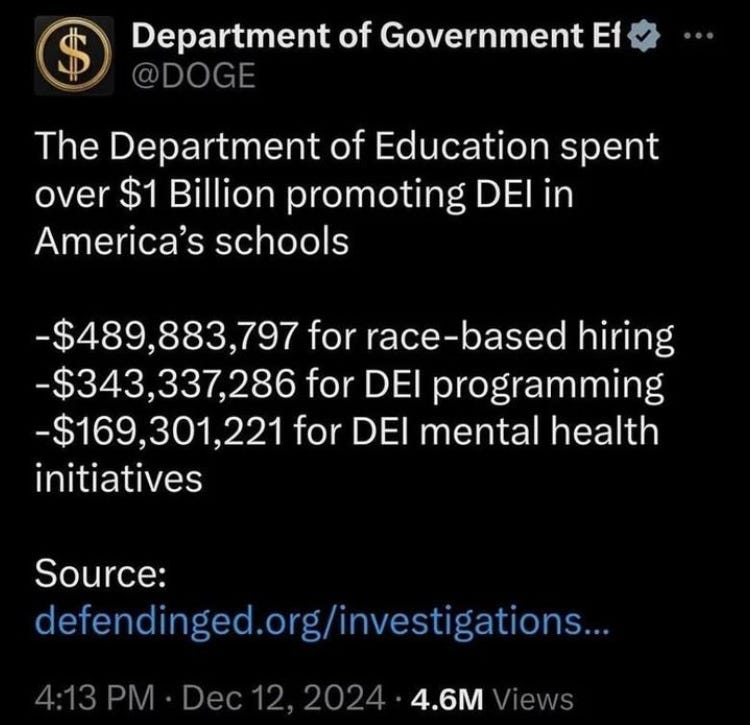
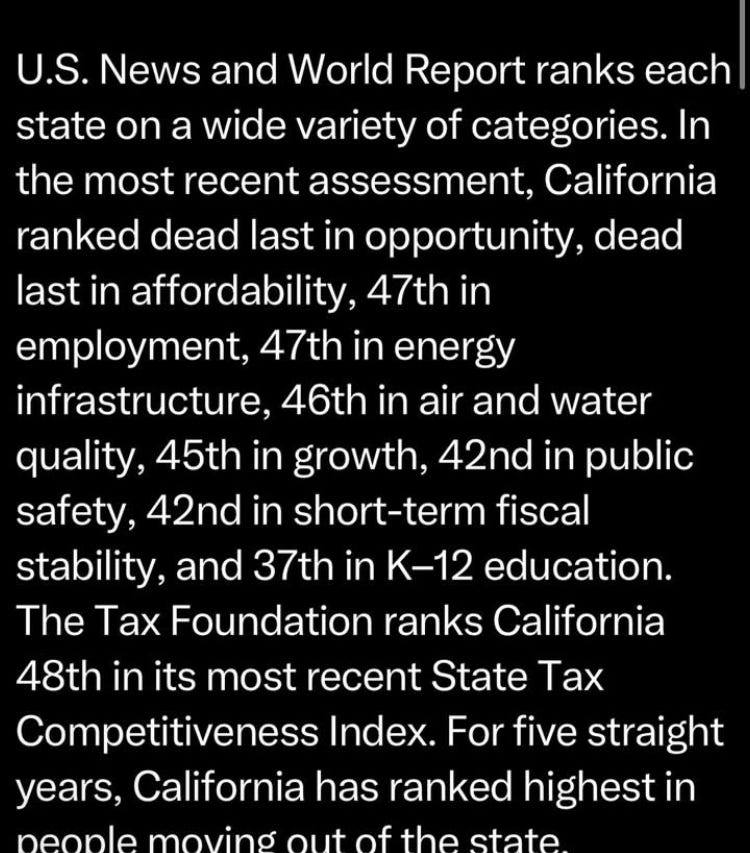

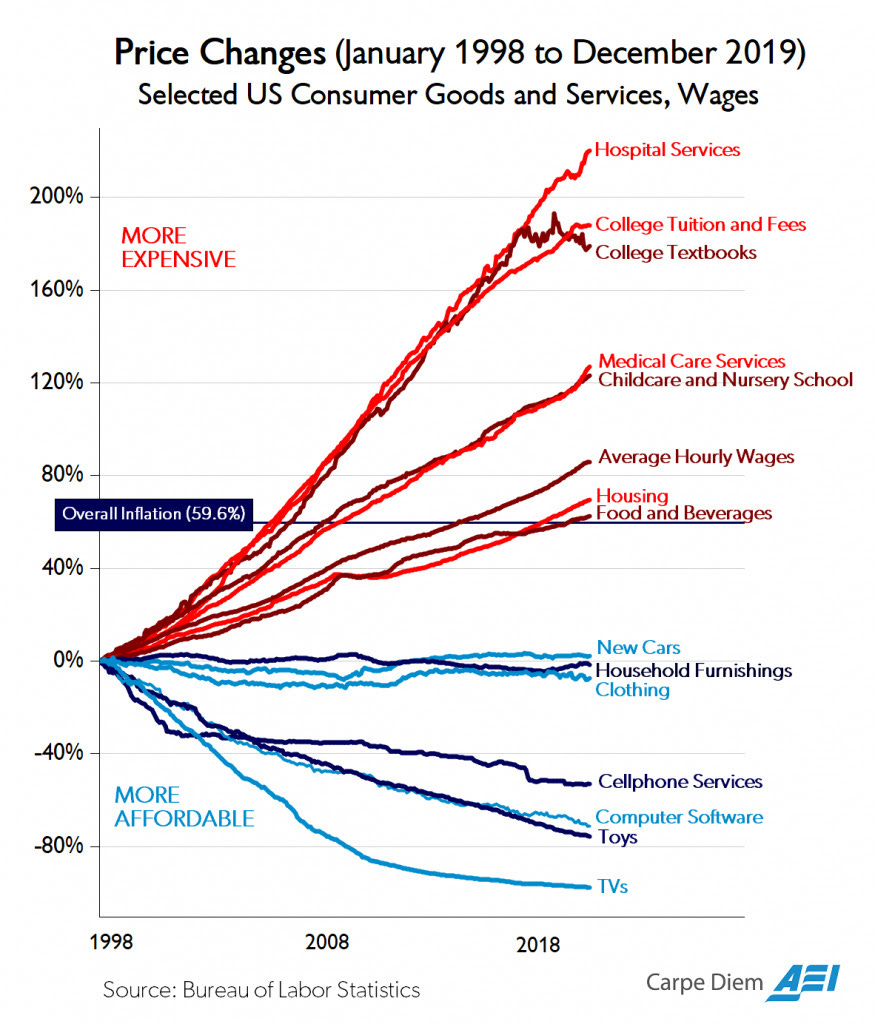
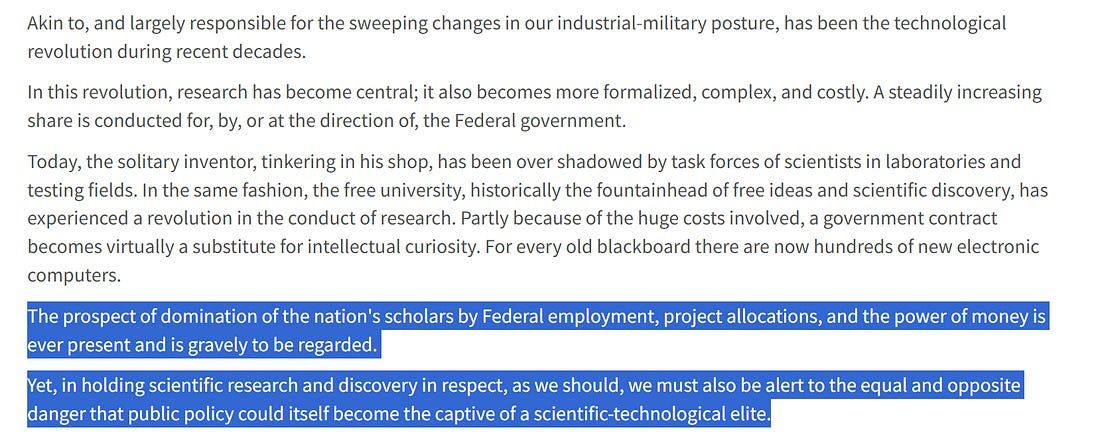
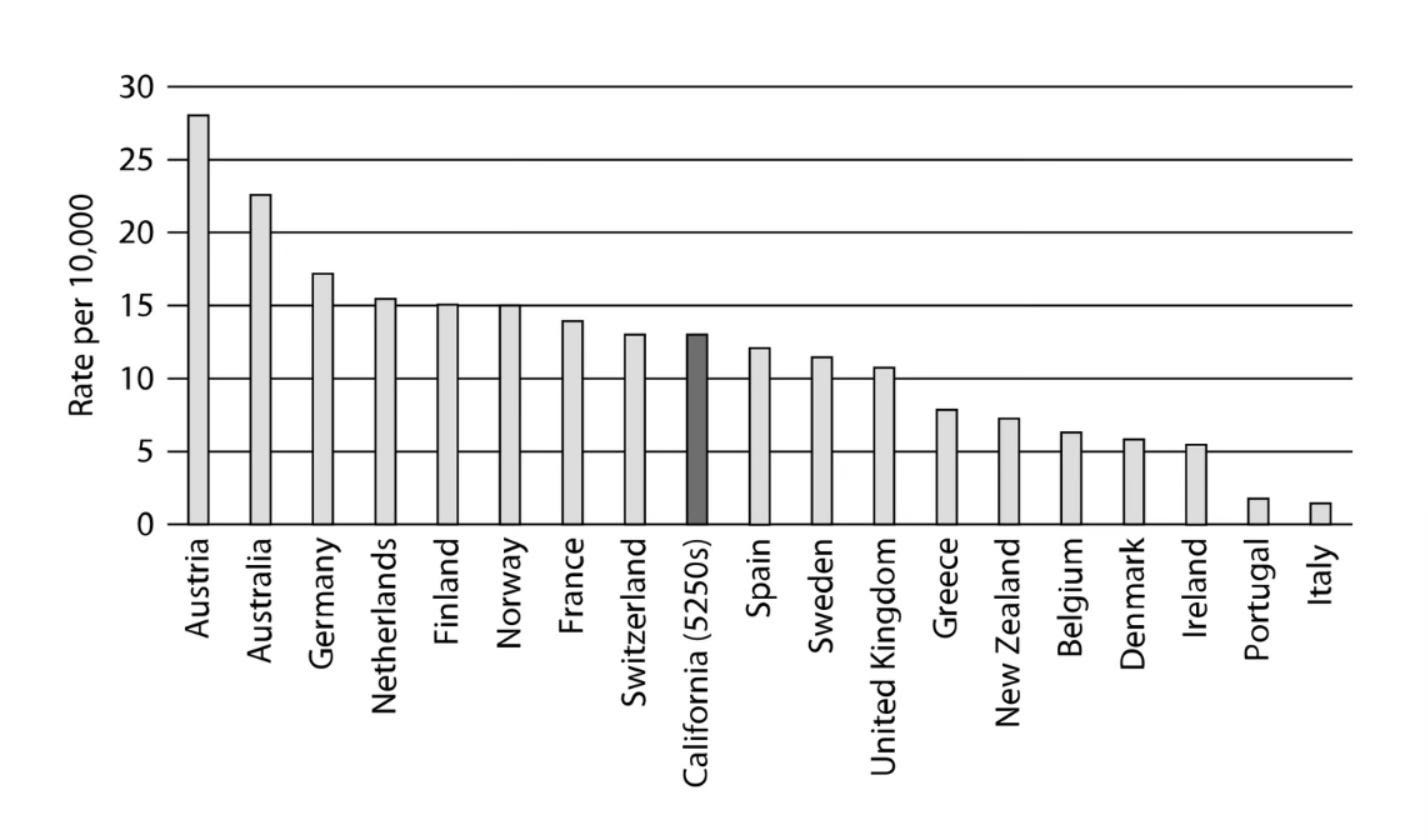


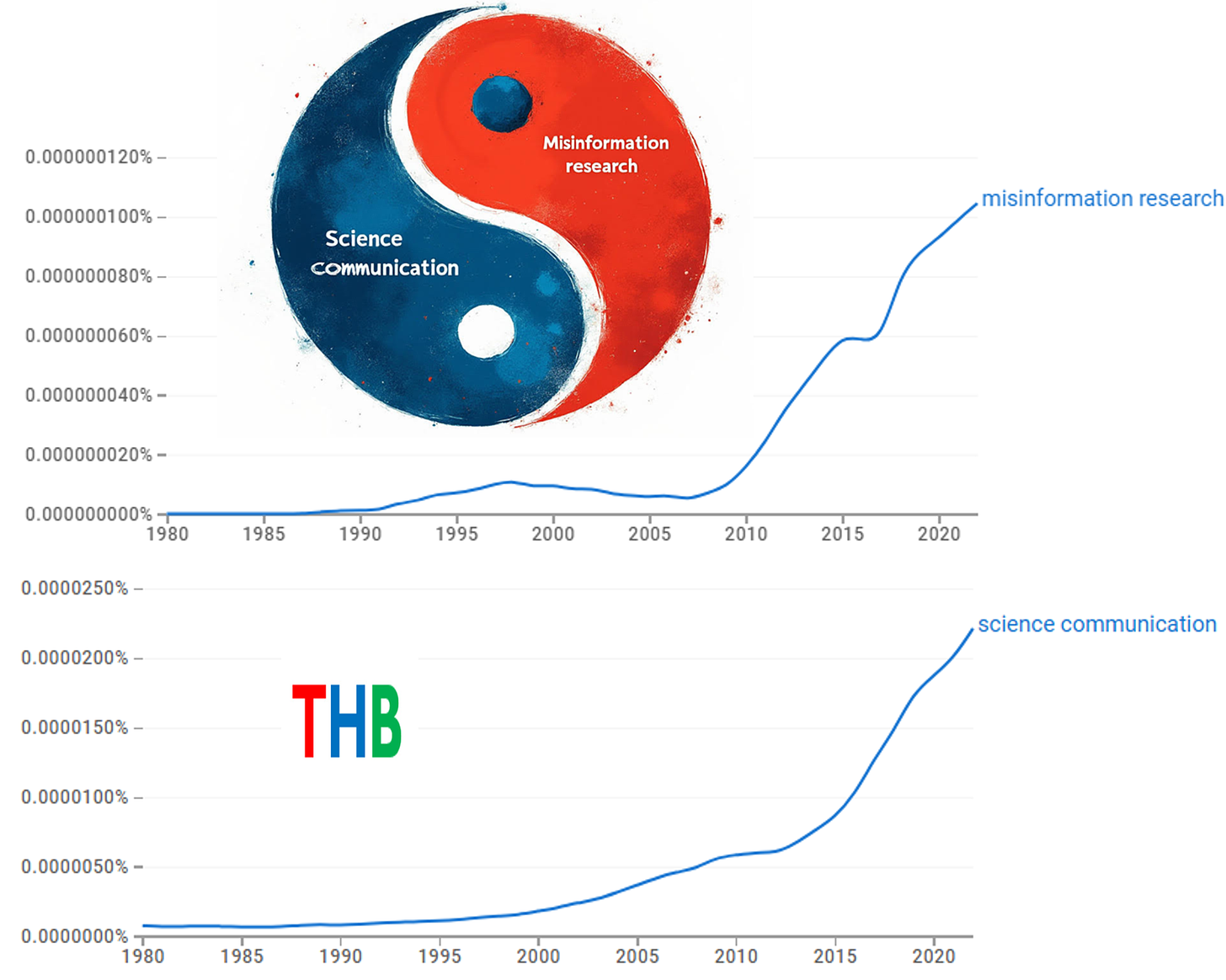
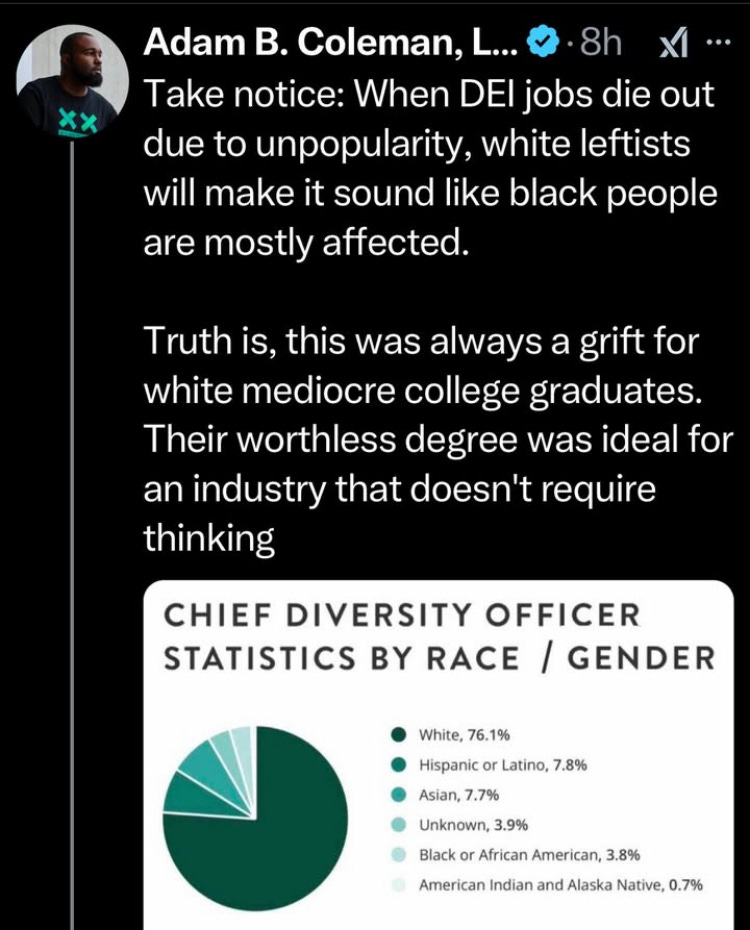

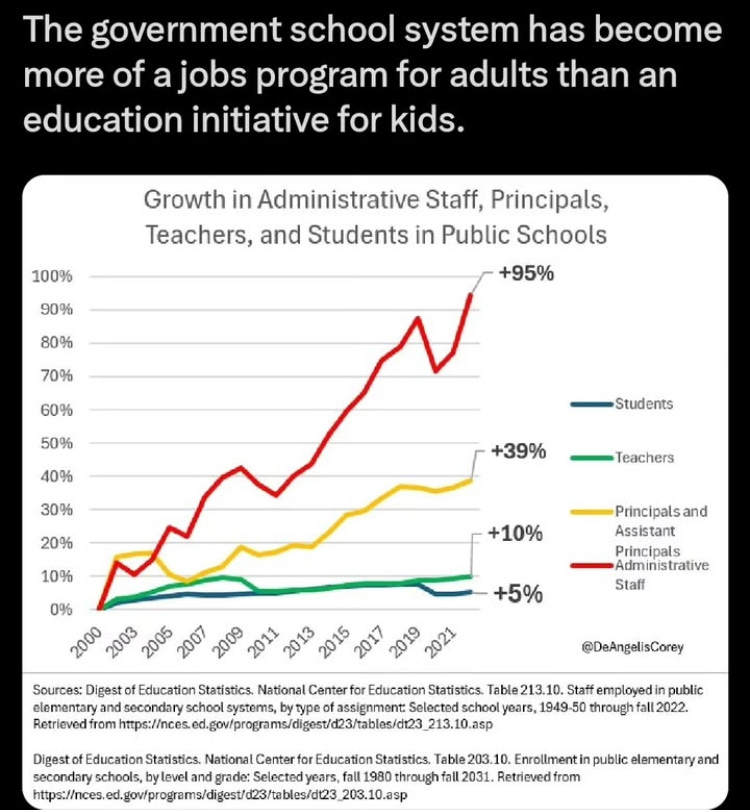
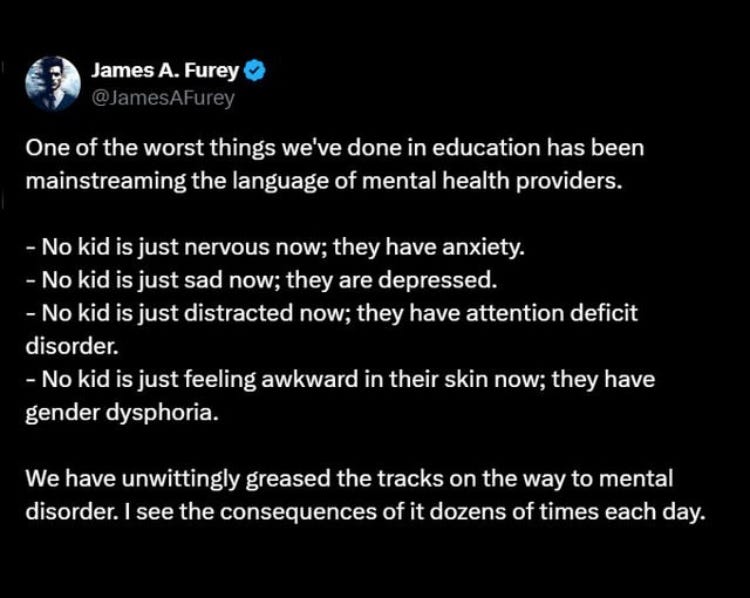
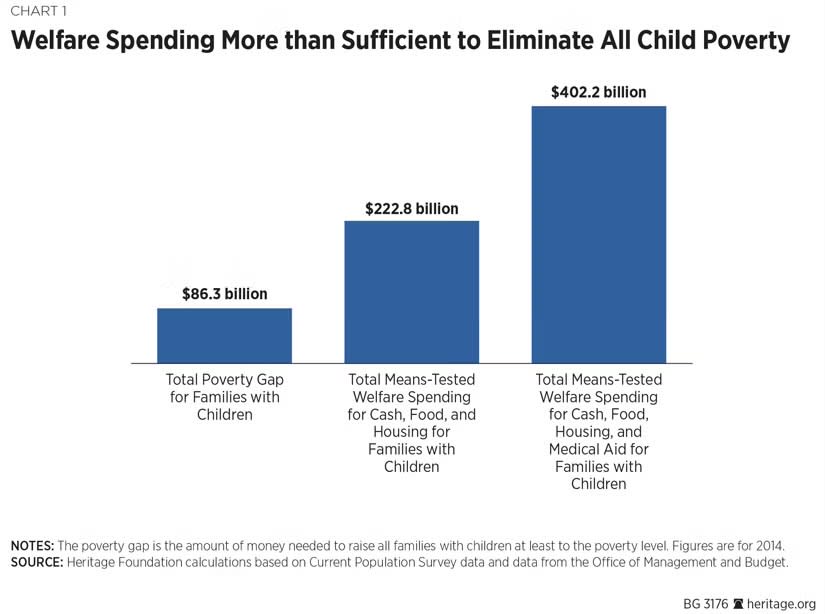

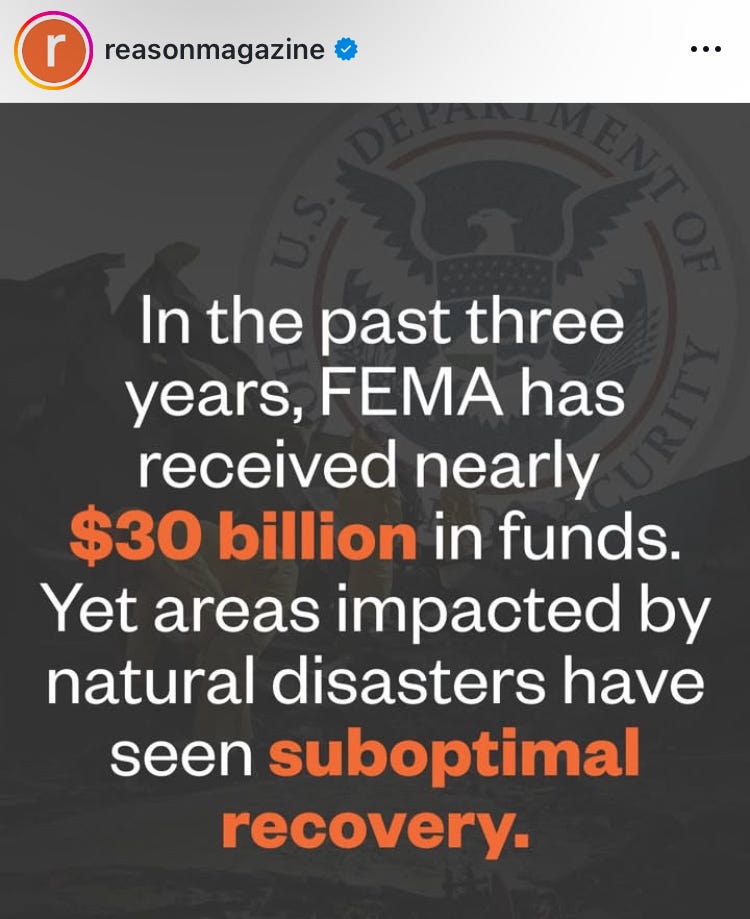
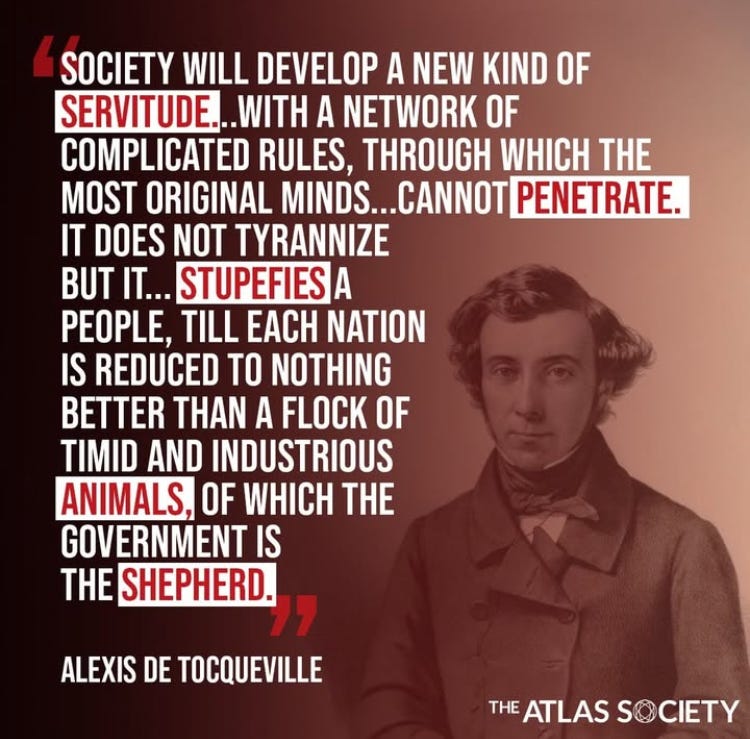
I cannot say enough about how much this article rang true. As a single teacher trying to fight against the Leviathan of nonsense and garbage in education, it feels so overwhelming. I often want to shout out in exasperation to other teachers, "Why on earth are you so dedicated to supporting bad ideas that don't work?" But of course, it's not really them. It's the Blob. The Leviathan. It seeks to devour and crush everything in its desperate quest for greater and greater mass.
Best article I’ve read on here.
Well done.
If that’s the US…then the situation in Australia is diabolical…because the PMC bureaucracy outsources everything to the consulting firms, despite claiming benchmarked compensation to the private sector.
Not sure where I saw this but : $9B in fees in 2022…greater than the profits of the ASX top 10.